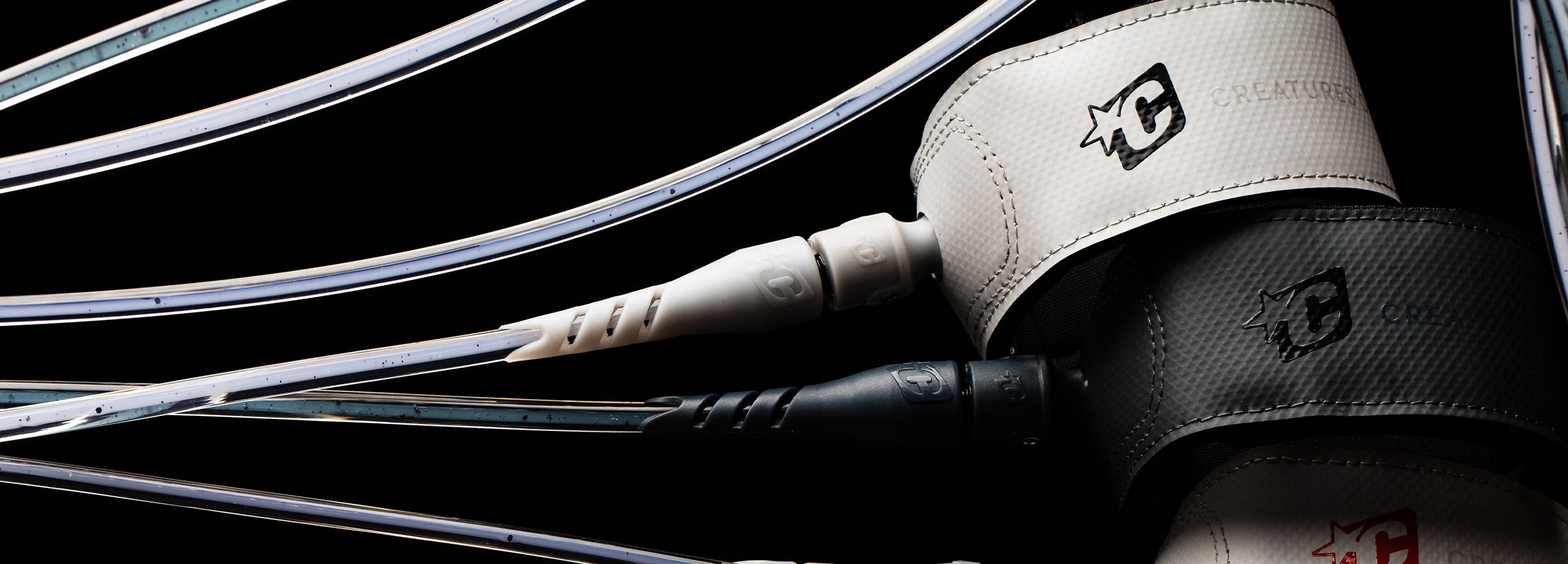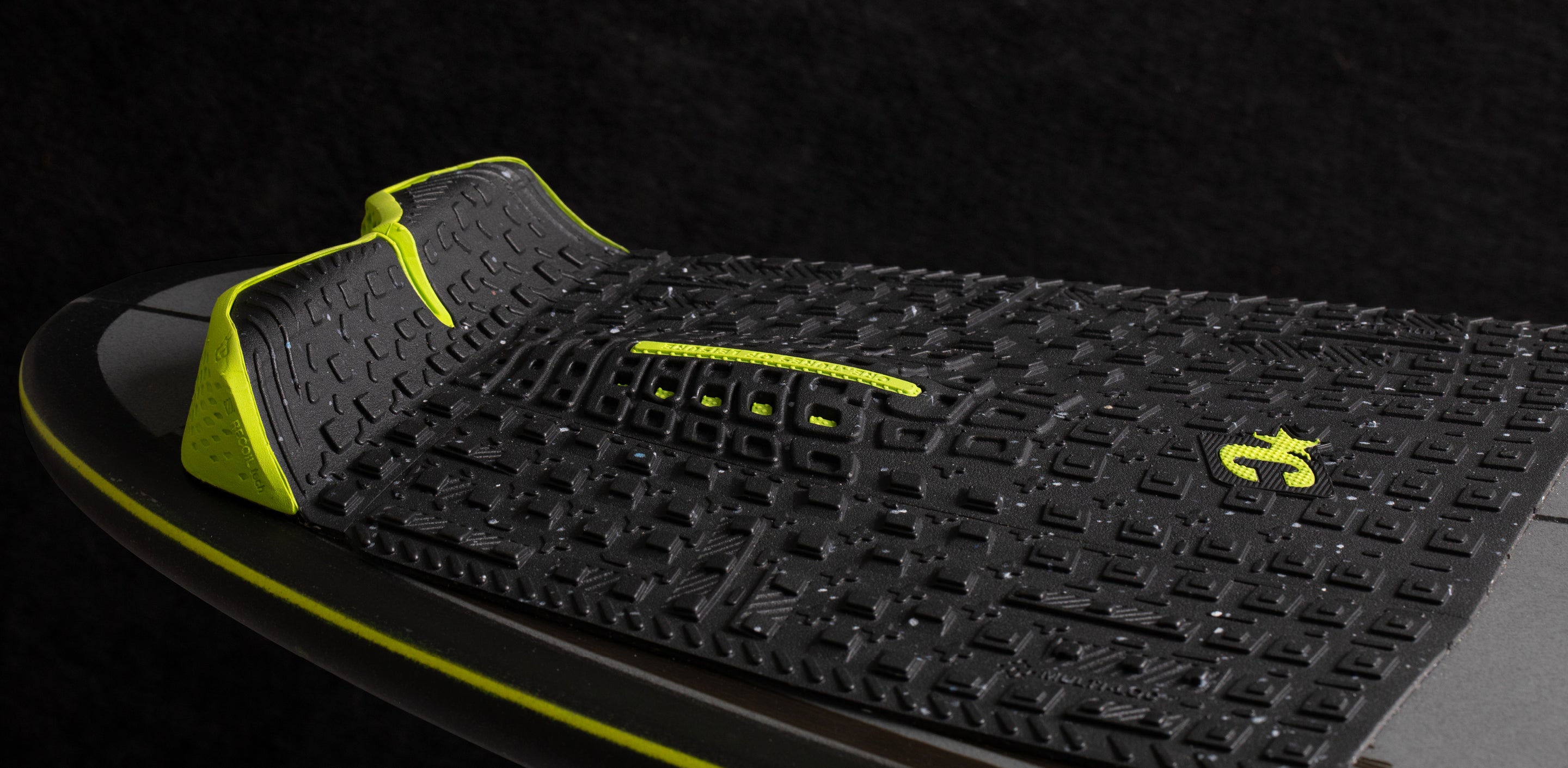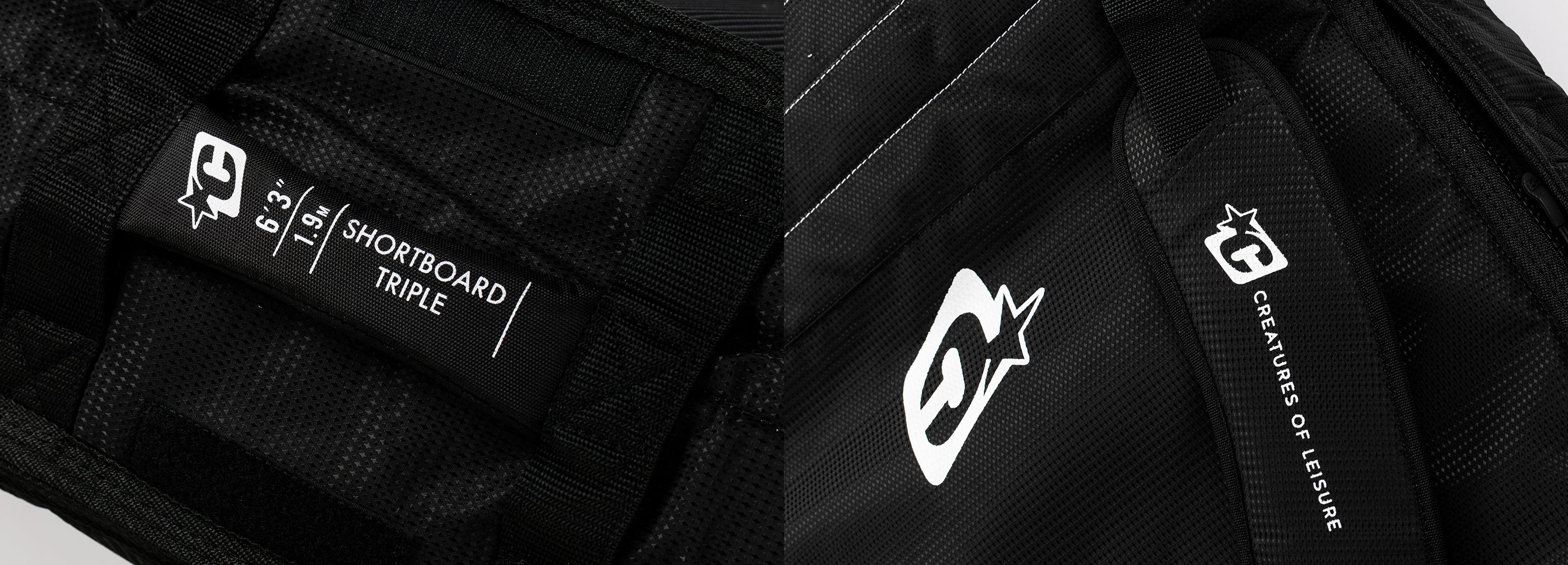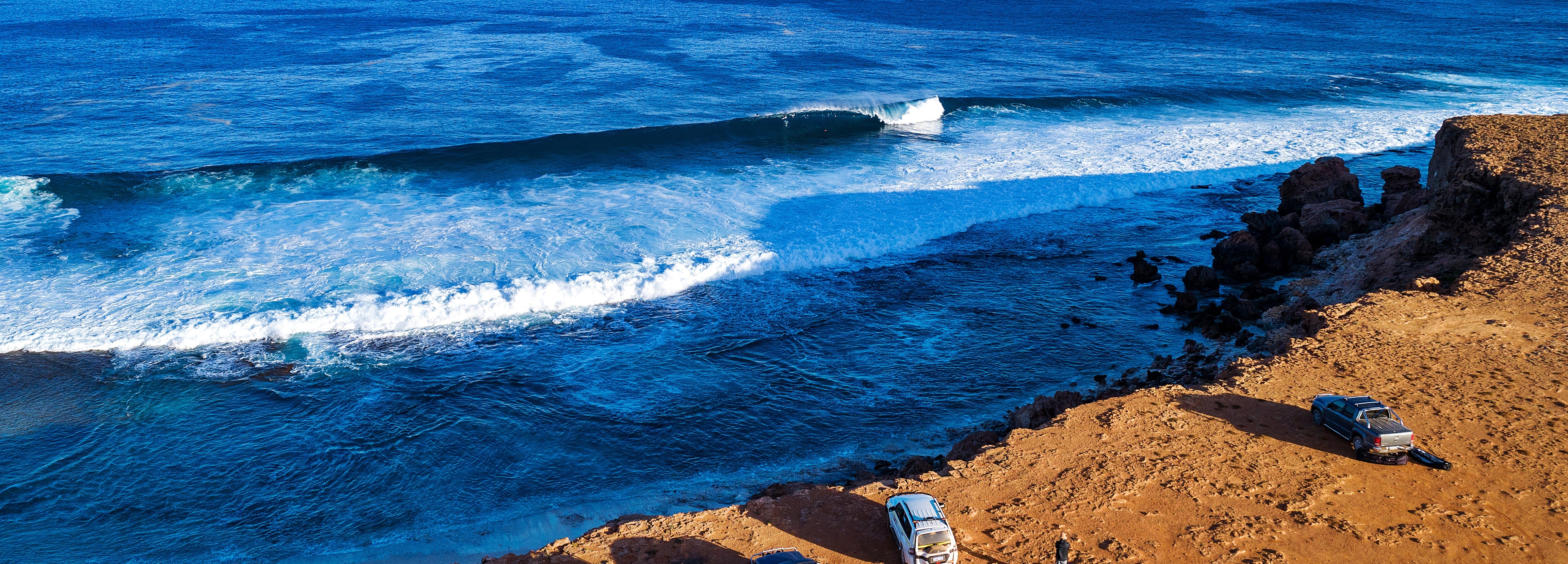How to Choose the Right Surfboard Leash
EVERYTHING YOU NEED TO KNOW ABOUT CHOOSING THE RIGHT SURFBOARD LEASH
When it comes to choosing the right surfboard leash for your board, it can be pretty overwhelming. Especially when you don't know what exactly you need to look for. There are so many different sizes, shapes, lengths and styles of leg ropes out there. How on earth do you know which one is right for you and your board?!
This blog aims to break down that mystery for you and get you out on the water safe, comfortable and shredding (Sorry no promises on the shredding).

Cruz Dinofa, securely connected to a big straight air in Hawaii.
GETTING STARTED
LEASH PARTS
Here's a diagram of the basic parts that make up your leash. Its good to familiarise yourself with the terms so you don't sound like a kook when you're talking to your local surf shop guru.

THE CUFF
The Cuff on a surf leash is the part that attaches to your leg (or arm if you're a booger). The main thing to look out for here is how comfortable it is and how secure. Surf leashes these days generally have a double wrap-around Velcro cuff which gives you comfort & adds extra strength / security to your connection. If you can, try a few different ones on to see what you like. Don't settle for a scratchy, cheap leash. As soon as it’s put under strain, problems like chafing start to raise their ugly head.

Hughie Vaughan opts for our Slim Fit leash, designed for slimmer ankles. Gold Coast 2024.
THE SWIVEL
If a surf leash doesn't have a swivel, don't go near it! Swivels allow the leash to spin and twist to avoid tangles and tripping you up while you ride. Without them, your leash can be a proper pain in the ass. Most leashes come with either a single or double swivel which can sit between the Cuff and cord, and also between the Cord and rail saver.
Swivels are a must in our opinion, they not only provide ease to your surf but add safety too. Get a double swivel leash if you can.

THE LEASH CORD
The bulk of your leash is made up by the cord. These come in a bunch of lengths and widths. Your suitability will depend on the board you're riding and the wave conditions you're in. Typically speaking, the thicker the leash cord, the sturdier and stronger it is, making it harder to break. However, the thicker the cord, the more drag it will create in the water and slow you down.

Shion Crawford and his trusty 7mm RELIANCE Pro leash. Hawaii 2024.
RAIL SAVER & LEASH STRING
The rail saver does 2 things;
- Attaches your leash to your surfboard (via the leash string), using a sturdy fabric construction with velcro.
- Protects your board rail from the leash cord when strain is put on your leash.
Without a railsaver, there's a high chance your leash or string can crack, or even rip right through, your surfboard rail. The wider and longer the rail saver, the more protection it gives to your board, However, longer and wider rail savers also create more drag.

Pro tip: make sure your leash string is not too long! Your Rail Saver, needs to sit over your rail to do its job.
FAQ'S WHEN CHOOSING A LEASH
1. HOW LONG DO I NEED MY LEASH?
General rule: Go as long as your board length.
Leash lengths range from 5ft to 12ft and are not a one-size-fits-all solution. The right leash for your board depends on the length of your board and your surfing level. A general rule when choosing your surfboard leash is that it should be the same length (or slightly longer if your board is in-between sizes) as the board it’s being used on. For example, if your surfboard is 6'0, use a 6'0 leash. If it's 6'6 Surfboard, grab a 7'0’’ Leash.
Other tips:
Beginners may like to ride with a little bit bigger leash just, so you're a little further away from your board when falling off. BUT don't go more than 1ft bigger than your board as your fellow surfers might hate you when they get your board in their teeth. Also,don't go too short, you might get a nice head bruise when you fall off and the board rebounds straight back at you.
Surfing bigger waves? Grab a bigger leash. You want that board as far away from you as possible (without having to haul in an anchor)
Note: Leashes will stretch so keep an eye on that and replace them as needed.

2. HOW THICK DO I NEED MY LEASH?
Basically, the thicker your leash, the stronger it is but the more drag you’ll get.
The smaller the wave you are surfing, the thinner you can go with your leash. If you're a small wave or competition surfer, a thin leash (5-6mm) will provide less drag and ease of catching waves. These are often called ‘comp cords’. Riding this same leash in large waves however, will most likely result in you treading water out the back while your board hangs in the safety of the shore - be prepared for a snapped leash. Go thicker when you’re surfing bigger or heavier waves, so you're not left hung out to drown without your board.
Regular and Large Wave leashes range from 7-9mm in Thickness. While they do create more drag than a comp leash, they'll be a lot less likely to snap when it comes to frequent bails or taking poundings in bigger, powerful waves. We recommend these thicker leashes for both beginners and bigger wave riders.

3. ANKLE LEASH OR CALF/KNEE LEASH?
ANKLE:
The ankle leash is your most common cuff attachment. It's the most comfortable and convenient when it comes to pulling back your board in the midst of a tumbling. It does, however, have a higher chance of tangling than a knee leash.

Italo Ferreira giant b/s rotation fitted in a SUPERLITE Pro 6 to his ankle. Hawaii 2024.
CALF / KNEE:
Calf or knee leash is generally best for the longboarder and Stand Up Paddle boarders. Because of the higher attachment point, surfers are able to walk their board with minimal chance of tripping over their leash. There are less tangles and less drag in the water. They are however less comfortable and not as easy to pull back your board on.

4. COILED OR STRAIGHT LEASH?
Coiled leashes are great for Paddle boarders, Foilers and Boadyboarders. The compact coil provides less drag in the water enabling faster paddling while also reducing the chance of coiling around your feet and tripping over. For SUPers, a coil leash is the ultimate flatwater paddle leash while your straight leash is much better for actually surfing in waves.
5. WHICH MODEL DO I CHOOSE?
Most of the time a higher price equals more features and comfort. Every brand has a range of models, each of which often comp in Comp, Pro and Big Wave Versions. No wonder it can get confusing when figuring out how to pick the best surf leash for you. Generally speaking, you’ll find there’s an ‘entry level’ version, which offers good value with a few less features. For example, the CREATURES ICON Series still has all of the key essentials like swivels and railsavers, but won’t have quite as much cuff comfort. CREATURES RELIANCE is a great balance of tested materials and techniques with a few added features. CREATURES SUPERLITE is the best of the best, offering everything advanced surfers could ask for in a surf leash.
6. WANT EXTRA LEASH SAFETY?
We designed this Quick Release Pin as a faster and more accessible option to free yourself from a snag. One quick pull will disconnect you from your leash and the tangle you didn’t plan on. You can retrofit the Quick Release Pin with any CREATURES leash.

To shop the full range of CREATURES options, head here.
Or, if you want a quick shortcut, this is our bestselling surf leash. Great for a wide range of conditions in small to medium waves, for a variety of skill levels.






